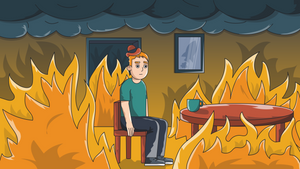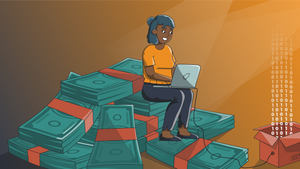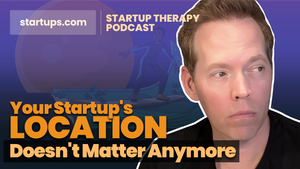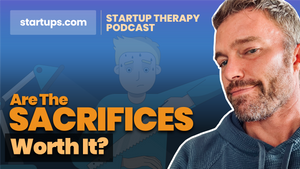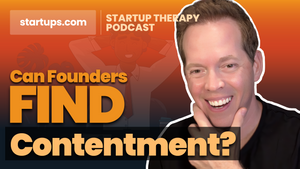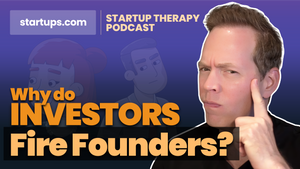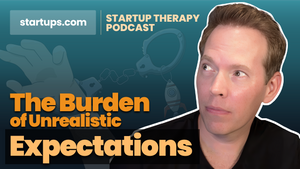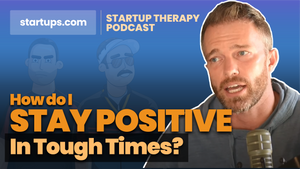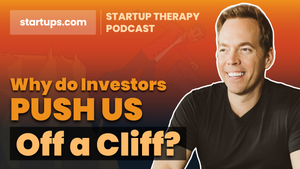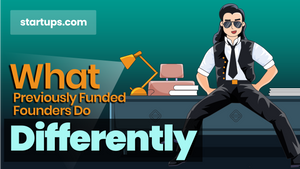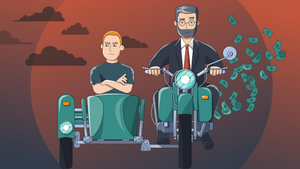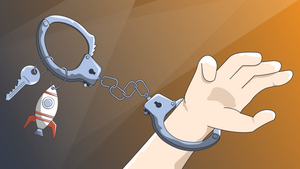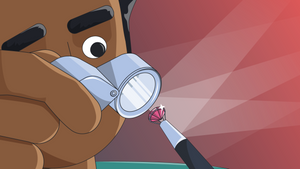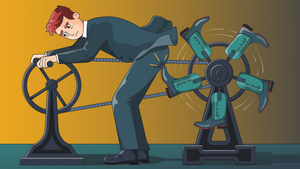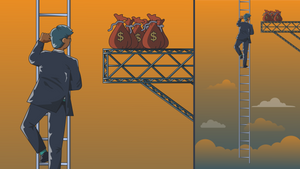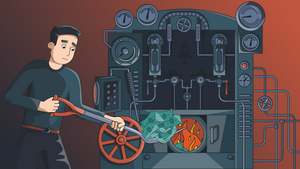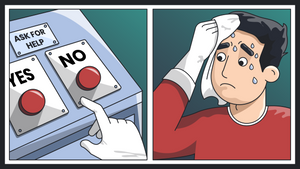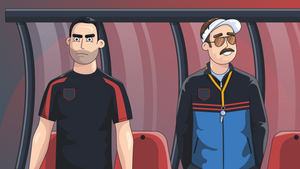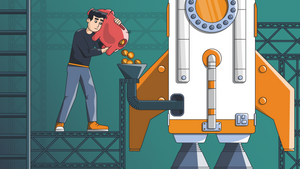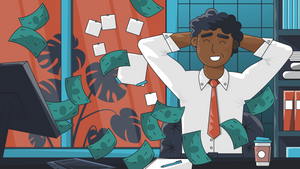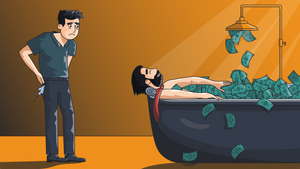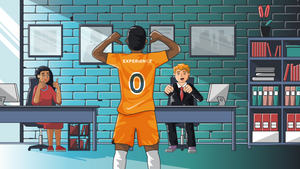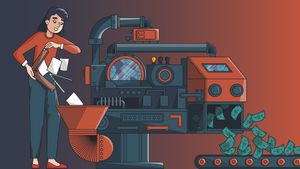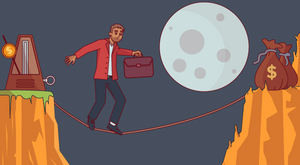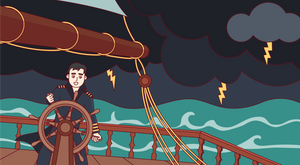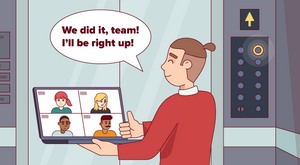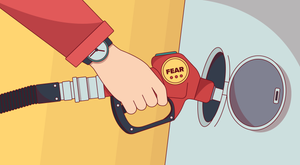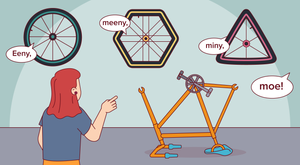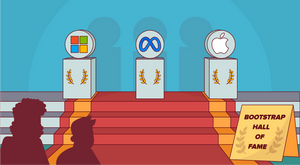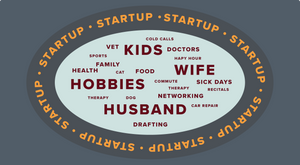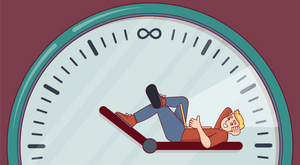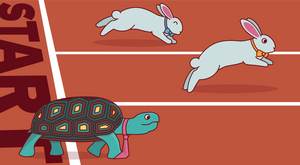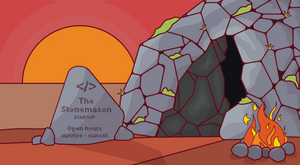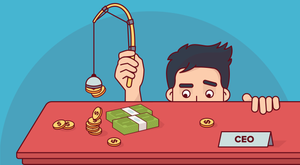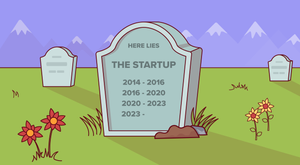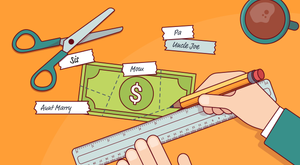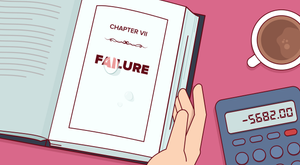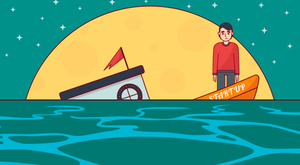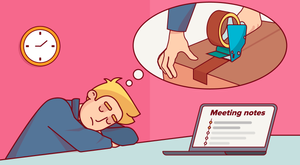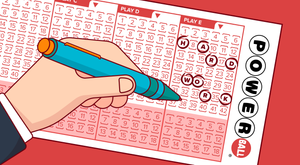Find this helpful?
This is just a small sample! Register to unlock our in-depth courses, hundreds of video courses, and a library of playbooks and articles to grow your startup fast. Let us Let us show you!
Submission confirms agreement to our Terms of Service and Privacy Policy.
Already a member? Login
AI Generated Transcript
Ryan Rutan: Welcome back to another episode of the startup therapy podcast. This is Ryan Rutan joined as always by my co host and the ceo of startups dot com Wil schroder will today we're gonna talk about the much lauded, often misunderstood and mischaracterized side hustle and why it's important where it fits into startup life and uh how to survive it and get through it
Wil Schroter: and when to quit. Talking about what people are really asking, everybody gets into the side hustle, everybody, everybody loves the idea of the side hustle and we used to call it just your startup now it's called. Now it has an official term, it's called, it's called the side hustle. But the question we get time and time again every time I sit down with a founder and they're kind of they're so eager to do the next thing. The question I get is what are the signs? What are the telltale signs that it's it's time to quit? It's time. And what they're really saying is when is it safe to quit? You know? Which is to me kind of a funny question, Ryan, hey, when is it safe to know that your startup is gonna be just fine and nothing will break.
Ryan Rutan: It's just kind of never, never. Yeah, I think it's it's about shifting the odds of the probability from 99% failure to Somewhere closer to 5050, right? And then at that point you might feel a little bit better but making the leap.
Wil Schroter: The T. L. D. R to this whole podcast is probably wait as long as you possibly
Ryan Rutan: can
Wil Schroter: but and probably a little bit longer after that. I mean if we're if we're really like you know staking it out. I don't think that people have an issue when they are staying around too early with their side hustle. I think the issue comes around when they cut out too early now. Now that said yeah so so I should probably said I don't have a problem. I don't see a problem when they're staying too long. I see when they cut out too early. So what I like to do and I'd love to hear your thoughts on this but I'd like to make a case for sticking with what you're doing about as long as possible and then and only then making the cut over. So at a high level run. Let me ask you this when you think about what you think about this this discussion you're having with another founder and they say hey Ryan, I'm looking to jump ship, what are some of the first questions you're asking them to kind of qualify it a bit.
Ryan Rutan: Sure. So it's it's you know it's it goes back to their personal burn rate and we've talked about this in another episode and it's probably worth revisiting that at some point as you consider this. But it really goes back to this notion of are you gonna be able to stay afloat right? You said this 1000 times startup storming out of money founders run out of money, right? So the minute you take on the personal, It's a huge piece of it, right? It's it's probably 80% of the decision is will I be okay? Well, I personally be okay if I make this decision. And so one of the things that I start to dig in on first are, are really like, because the most important thing is that personal survivability, but what the founders typically need to hear and what the the process that they need to go through and the questioning is, what is it that you think you're going to do one of the questions? I love to ask and there's very rarely a good answer to it. It was okay, let's just assume you quit your job right now and now you have all the time in the world to work on your syrup. Do you know exactly how you're gonna spend every hour at that time? And the answer is almost never. Oh yeah, yeah, I know exactly what I do right? They know that there's a lot to do. They know that they're overwhelmed, but they don't know how they can spend that time efficiently effectively or in any way that might possibly pay them back and help to support their lifestyle. So typically starting with that question helps to open them up a bit to the possibility that oh maybe I don't really need to quit, right? Saying like, yeah, I need three or four more hours but I don't necessarily need 40 hours. Alright. So it's about understanding you know what what the what the time aspect of this looks like and then the other one then the big one is like what would your ability to be if you didn't have your paycheck anymore if you drop this right now, what would happen? Right, how long would your savings account last? You know, how long would your spouse stick around? There's like because
Wil Schroter: that's what you think about that at some level, right? I mean it's not like nobody thinks that hey if I quit my job or stop doing what I'm doing, you know will I be in jeopardy in some way. So I agree with you, people are definitely thinking in that capacity but Ryan, I think that what happens is you and I start this side hustle right? And we're working like crazy and the very nature of getting a startup started is there's so much stuff to do right? I mean there's a million things to do pretty much all at once and the thing top of mind is that we can't get it done, we have all these ideas, we have all these things that need to get done but our job is holding us up and we can't get them done at first. I would say look that's going to be the case whether you quit this job or
Ryan Rutan: not right?
Wil Schroter: I mean you're going to be overwhelmed with stuff. There's no version where you quit your job and all of a sudden you're like, wow, You know, I've got free time. You know, I don't even know what to do. This is just like an endless torrent. And you're saying you're going to make it less endless. You know, that's pretty much do you
Ryan Rutan: want to be overwhelmed or overwhelmed And poor is the question that
Wil Schroter: yeah, Like that's the thing. Like, so I think where it starts again is that we get this opportunity were so amped up and we want to go and we want to go get go full guns in this thing And we feel like if we don't drop everything else we're doing and go full guns on this, then then it's, it's never going to be successful. And there's some truth to that, right? I mean, there's there's a little bit of truth to
Ryan Rutan: that. And if there was nothing holding you back financially or any, you know, any other aspect of your life that you couldn't just dedicate to start up then of course, that's the right answer. Put as much time as you can into it. But I think it's figuring out that can piece that becomes really, really important for people.
Wil Schroter: So, but let's talk about the concept of runway because I think this is going to like basically be the core of this topic. It's not about when you should quit, it's about understanding runway and when you don't have it. So if you aren't familiar with the term, the concept of runway is simply How much longer do you have before your startup starves. And in this case it's probably just you. So let's assume that the two are almost one and the same, ideally a founder's number one job is don't run out of money. If you if you if you look at the mas loves you know, hierarchy of needs. Don't run out of money is at the top of the of that hierarchy, right? And you hear this all the time when people are talking about fundraising or anything else like that. They're just saying if nothing else don't run out of money. We're talking about you. We work.
Ryan Rutan: And so
Wil Schroter: what what what too soon. What we're talking about is what is your runway look like. Okay. And so your runway is again, How much time do you have left in this startup before it runs out of cash If you stop bringing in or creating whatever kind of cash flow you have right now you cut off that runway. And so Ryan again, you and I are starting this business. We're super excited about our side hustle and we say we both quit our jobs. We've probably got six months worth of runway. Personal savings. You know, maybe a small bit of investment. We got something. But here's the thing man when that runs out this show's over. It doesn't matter how much more time we created were done. And so at its core Ryan we're talking about part a big part of the decision for your personal runway is simply how much will you have if you cut off whatever your income stream or whatever you're doing right
Ryan Rutan: now. Yeah. Well the reality is for a lot of people that the side hustle can be almost infinite. Right? You can spend as long as you need to, as long as you can maintain, you know, your your current employment, your current job, whatever your income sources that gives you unlimited runway and there's a lot of power in that. We've talked about this before. Um, it's one of the main considerations in taking on capitol because once you take on capitol, you now have expectations. You probably start to hire people, You start to spend more money and now all of a sudden you have a burn rate and a run rate. There is a point at which your spend will exceed what you have in the bank. And then it's game over or at least a massive change. Right? And this is so much more serious when you're talking about this at a personal level than at the business level. Right, winding down an LLC is one thing, you know, winding down your life is an entirely different prospect and far more painful.
Wil Schroter: Okay, so I had a buddy of mine that I met with today for lunch. Great guy. He's running this awesome company and he had a slightly different condition. This wasn't a side hustle. This is actually his primary gig. But in order to keep the gig going, he's got to do a whole ton of consulting. And he's saying, look, consulting at this point for the business Is like 6-7 months of the business. Like I can't get my product built right now because doing all this consulting. So like the consulting is kind of getting in the way of my of my core business. And I said, fine. I said, that's fine. So long as you're keeping the runway extended right? The idea of cutting that off and giving yourself tons of time to work on stuff. But at the expense of your runway, um, is suicide. And I mentioned to him, you know, the famous examples of folks that have done consulting or something else like that in order to drive their core business. And, and base camp comes up as you know, one of the most famous examples, you know, Jason and David rather spend a lot of time talking about that, how they work for 10 years doing consulting to essentially get to what was base camp. However, you need to pay the bills. And I think two of the primary ones, right? I'd love to hear your thoughts on this. One is going to be from paycheck capital. You know, whatever your current job is now. And the other is customer capital, yep. Right. Whether that's consulting or new customers from the side gig or whatever. I can't see any reason why you wouldn't stretch those forms of capital as long as possible. What are your thoughts
Ryan Rutan: having done it and seen both sides of it? I I now know that I only have one preference there and that's to extend that runway as absolutely long as you can. Or just to not have a runway. Right? Because you can put yourself in a situation where, okay, you can always lose your job. Lots of things can happen. But at least theoretically there's no end of that road. Right. You can keep that going. As you said, you know, whether it's customer capital or or you know, your current paycheck. And honestly, it's it's a great piece of advice and it's a great way to start to transition out of the job and into the business even if it's not the full step. He's through some sort of service based proxy. And I talked about this with founders a lot and they're like, well, but I want to build software. And I said, yeah, software is expensive. Software takes a long time to build and you won't be sure if it's actually gonna solve the problem. It's risky. Whereas you can build the service proxy, run consulting, do the process manually. Sure. It's not as efficient. Sure it's not as scalable, who cares, you're going to build a better piece of software in the end if you ever do and you won't have to give up income in the short term. So I think there's a lot of things you can do and you know, people tend to hate half measures because it sounds like a bad thing, but honestly in this game, if you can take a half step and plant it firmly as opposed to taking a full step and falling on your face, I'd, you know, I'd go for that every time.
Wil Schroter: Well, there's another piece to this and I don't want this to get overlooked customer capital. Paycheck capital, whatever you call it, is non dilutive, You're taking exactly you're taking on cash without having to take any delusion whatsoever. And so if the trade off there, in my mind, if the trade off there is going to be, I've got to spend 18 months taking paycheck capital, customer capital, you know, whatever it might be or, or I can raise the same amount or use the same amount of time In say 3-6 months where I can be fully focused on the product, I'll take the ladder every day of the week. Now there's a lot of folks, investors mainly that would challenge us on that notion and say no, if you're, if you're committed to this business. If you're going to go all in, go all in, don't mess around, etcetera. I think it's worth exposing some of the caveats in that case some of the caveats are if you raise money from an investor and you go all in and the money runs out, you're just done like the investor is going to keep on making more investments, they're going to keep doing what they do, but you are, you're going to be out of a job out of money and out of a company. I love how cavalier investors are about how committed you should be when they on the other hand, have the optionality of just getting in and out of investments. It just, it blows my mind. So I don't even think this is necessarily a conservative approach. You know, if we look at it that way. So, you know the way will and Ryan are talking, you're gonna keep your job or you're going to, you know, keep your customers going with consulting contracts. That's a conservative way. Not necessarily to me, it's just an intelligent way to build a business without being without giving up equity at your, at your most the time
Ryan Rutan: when you need it the most right? When you need the capital, you've got, yeah, you need it the most and you've got the least ability to acquire it because that's the other thing too right. Like, you know, we act as though like, well, I could just go raise funds for this thing. Maybe a lot of people that think they can do that right? Maybe once and maybe it'll be enough to get you where you need to be. Maybe it won't uh, yeah. So now I think the, this idea of, of trying to create as close to an infinite runway as you can until, you know, you no longer need it right at some point the business creates its own runway.
Wil Schroter: Alright. So we have a pretty good sense for kind of mitigating some of our downside. But let's talk a little bit about really what we're looking for. You know, the things that are kind of maximizing the upside or giving us the signals to say, yeah, it's time to go. I would say there was a bunch and I'd love for you to talk about some of the marketing metrics because something you understand really well. One of the things I would start with would be that the sales metrics and what I say there is, we talked to founders and they'll say this thing is doing really well. I've got, I've got at least enough cash coming in from this that it could supplant what I'm otherwise making in salary and that's always an important one. It is important. However, what I then often ask is how long has that been going for and I'll usually get an answer. Something along the lines of uh, well, as of this month were positive as of this month. You know, we've got a big enough sail like an enterprise sale or we've had monthly recurring revenue or something like that. That's kind of, you know, got us to that level and I'm like, hey, that's cool. But how long has that been persistent? Best
Ryan Rutan: month ever and multiply it by forever. Were like what happened once, but now we'll just keep doing that forever. Yeah,
Wil Schroter: here's how startup revenue actually comes in in a big blast all at once and then an absolute drought for a lot longer than you ever expect and then a trickle and then more drought and then a trickle and then more drought.
Ryan Rutan: It's insanely variable.
Wil Schroter: It's, it's no matter how many startups, I look at how many startups I've been a part of, we all have some part in the business where it's just this absolute flood of great sales and great activity. Often. It will be something like you just launched the product, you gotta punch a bunch of media, a bunch of traffic or something like that. You got a bunch of sales and um, and things look great. You know, we can't even keep up with sales and that sounds awesome. What's missing from that equation, that discussion etcetera is how long can you sustain that? Yeah. And what you'll hear is, well I can't sustain it because we can't fulfill because we're not full time on this thing etcetera. Every time I would rather be super back ordered on everything that I've been on all my customer orders then have to be the opposite, which is were all fulfilled and we got nothing to do. We filled
Ryan Rutan: both those orders from this
Wil Schroter: month. Exactly. Um, I want to create backlog. I want there to be customers saying there's far more demand than I can, you know, have for capacity. I want that for as long as possible. In fact, I want it to the point where maybe I have to turn away some orders and that may sound ridiculous, but the one thing, it is a good problem and I don't think people are used to that because we think very linearly, we think, okay, if the orders are coming in now and they're coming in at this amazing rate, then it must mean that that rate will continue and if you've never done this before, if you've never done a startup, the one thing you can be absolutely certain of is it won't continue at that rate at all. You just can't see around the corner. And so we used to go through this a lot at the agency and professional services. This is almost the hallmark of professional services, It looks like this, you get a big new client, you are way understaffed your way under resource to possibly service that client. So all you can think of is we have to hire people, we have to go find contractors, partners, etcetera and you just have to be able to fill that back in because this is the order that's going to start to redefine what all future progress is going to be. No, it's not, no, it's not. This order will be a hint of what maybe it can be if you fulfill this one and said, you know, sell the next deal in the next deal in the next deal. But until you can create a consistent pipeline that can persist that line going up into the right, you have basically a blip and not a trend. Yeah.
Ryan Rutan: Yeah. And I think there's a lot of things that caused this, right? If we look over to the marketing side, then it's, it's things like how certain are you where your sales are coming from, you know, how are you generating this traffic? Do you have a reliable means of continuing to do that? And you said, you know, in the beginning, often you get this blip of sales that may be around launch. There's also something that happens um, you know, depending on the size of the market you're going after. Um, there's almost always some niche market, like there's always some, like early customers, like your early adopters, which I would, I would treat differently than early customers, right? Your early adopters are people who are typically looking for the solution in a way that other people aren't right there, They're voraciously searching for a solution to this problem. They need it. And so they're likely to adopt at a much earlier stage, be willing to pay more and those kind of things. And so as you work your way through, that's super high engaged population, then you may find that it's harder to continue to repeat that, right? That's where all of a sudden you hit this, this, you know, sometimes it's just a plateau in the sales. Sometimes it's a cliff, right? You've worked your way through all the, the, the super super fans and now they're gone. You don't know why. So one of the questions I often like to ask is how certain are you that you can continue to drive sales at this level, meaning I know where to find my customers, I know how much it costs me to acquire them and I know how much it cost me to service and we can keep doing that right? And very rarely are people like, oh 100% all three of those things. And so that's another hallmark that need to be looking for as you decide, am I ready to pull the plug and and make this my full time gig? And at my side hustle. These are really important factors that have nailed down and have some certainty around.
Wil Schroter: Yeah. And so what we're talking about is, do I have sustainable customer acquisition and here's the problem you kind of don't know until you don't have it anymore. So here's the, here's the most popular um, sequence that I see. Startup gets started, they have a big announcement, they get a bunch of early adopters which is fantastic. They get a ton of what feels like actual user adoption and acceptance and everybody loves the product et cetera and they say we've nailed it, this is a word of mouth product, just everyone loves it, yada yada and that sounds good but what no one tells you at the time but you'll find this out later whether on your own or somebody will tell you is there are different areas that basically steps like you said Ryan where from one moment you kind of burn through your early adopters then you have your next wave and your next wave are all the people that are easy to acquire paid traffic and you acquire them. They typed in exactly that keyword on google right They typed in or they saw exactly the right targeting on facebook and those are your inner circle kind of lay up paid acquisition folks. Your job doesn't really show up until you exhaust those. You don't really know what business you have until you know you can no longer use those people in any capacity. They've already given you their money, your job shows up for the people who don't type in exactly your keyword go to exactly your landing page and convert. So another way to look at it is your 1st 100 or 1000 customers are not at all representative of what the rest of your business is going to look like. The first three clients you signed at the agency are not at all representative of what it's going to be like to sign up business for
Ryan Rutan: you. I'm going back in time and remembering my first three clients from my agency and and my thought is thank God they weren't, they were representative of the future work man would have been a much smaller business in it and a much bigger headache. Yeah. So that that's that's almost always true though right? Like the people that you start with the work that you're doing early on particularly professional services, right? I mean less so with with product and software in some cases. But yeah, the early market is really tough. It's really tough to figure that out. And I and I like the way you put that right that your job really begins, you know when you've exhausted that low hanging fruit. And the other thing that I often look at and I ask people is, how many channels have you opened up? Right. If you're talking about customer acquisition specifically, how many channels have you opened up? Because if you're relying on a single channel right. It's dangerous. Right? If you're saying like we live and die on on pay per click and I'll ask him like, okay, cool, have you been through, you know heavy retail cycle yet where all of a sudden the prices for all that stuff change and like no, okay, well then your business is going to get real different between thanksgiving and christmas, so be prepared. Right? So, you know, having a, you know, being mono channel, um, can work right? But there's gonna be a limitation on that. And there's certainly a heavy amount of risk that you want to hedge against. Um, as you think about, you know, going back to the context of today, which is, should I quit my day job and focus on this full time. And you know, one of the, one of the key things I would look at is how many channels do you have open? How reliable are they? How repeatable are they? How well do you understand what it takes to drive success in each of those channels and that takes time. Right? It takes time. There's seasonality to that. So, you know, going back to this notion of how long should this take should take as long as it takes. There's no real benefit in getting to the end of the side, hustle road really quickly, right? Unless you're sure the business is doing what it needs to be doing.
Wil Schroter: Okay. So we've talked about a few things then, right? We've talked about, let's drag out our customer capital, our paycheck capital as long as possible. We've talked about, let's give ourselves just a minute to make sure that those, those blips are actually trend lines, You know, that first customer we sold or that that customer acquisition spree that we've had that, there's actually some way to sustain that over some period of time. And I think the, as we said at the top of the show, I think the one strategy we want to impose in every case is going to be give it time. Yeah, right? Give the side hustle sometime. However, let's talk about when it's no longer time to give it time when it being a side hustle is now an impediment to this business actually running. Yeah. Yeah. When Ryan, when you talked to founders and we talked to thousands of founders when you talk to founders and you think it's probably time to make the jump, What are some things that come to mind for you or things that you've seen where you feel like? Yeah. You know what, you should probably be doing this full time. Yeah,
Ryan Rutan: there's a, there's a number, right? And they tend to be highly contextualized to the business. So, you know, I'm searching now for generalities, but I would say one of the generalities is that you've, you've got a stable customer base, like we talked about, right? And you're starting to lose out on your ability to, So let's, let's say, you know, you use your example from a few minutes ago, you're now turning away some orders right? When you start turning away orders on a regular basis and this becomes a repeatable thing and you know what the return on those is, there's a pretty easy calculation that can be done there to determine whether it's time or not. Right? So that's, that's a pretty, pretty simple one, one of the others and I've seen this happen where the business grows and the founder keeps the keeps us going as a side hustle. But the business has actually started to do well enough or necessities lee has hired people, right? That can get out of control pretty quickly, Right? If you've got staff, you have people who are now needs some level of management and you are not available, you know, on demand. That can be pretty problematic, right? So if the business is to a point where it relies on human capital and you can't turf that off to contractors or other people who are a bit more autonomous. That's often a point at which things have to turn full time, right? But not without some of those other metrics being in place, right? That's not like to say, oh, well I hired a bunch of people and I'm burning through my savings and I have to quit my job so I go manage them. That's not what I'm saying. I'm saying if the other factors are holding true and you're thinking that maybe it's time to do this from a managerial perspective, that's often another trigger.
Wil Schroter: Yeah. And I feel like at some point you are holding the business back. You know, I've seen this too. I had a woman that I was working with, she had a specialty retail business and she was saying, look, I have so many orders backed up at this point that at some point I'm kind of bankrupt on orders if you will. You know, and there's another piece to it is I can hire other people to work on this, but it's going to be an inferior product. If they work on it. If I'm not working on it, you'll get paid a little bit less than I'm getting paid now. But it will be the right type of product in the agency world. It would have been, I could contract out, but that the client's going to get a terrible product. So I kind of need to do it myself. I think at that point where the product is going to notably suffer. Yet there's still enough runway to make it viable. There's still enough repeat order and there's a bit of a trend there to make it viable. Yeah, it's time to jump ship. You know, when you've kind of waited out the trend line, it is time to jump ship. And I would argue the opposite point now that it it is starting to hurt your business by not making that jump because because you can only side hustle for so long. Right? You know, we're talking about how the paycheck can help. You were talking about how the customer capital can help you were talking about how looking for the trend lines, etcetera can help you. But all we're really saying is we're looking for the point at which you can feel comfortable making the jump, but now it's time to make the jump and if you're checking those other boxes, yes, it's absolutely time to make the companies should feel good about it.
Ryan Rutan: Yeah. Now for sure. Yeah, I think that the other, the other thing that we we sort of touched on it earlier is that it doesn't necessarily have to be a full binary switch, right? You could phase yourself out, right? You could leave the full time gig and consult for the same company or another company in the same space, right? And there are ways to kind of dial that, that that back, which gives you time to adjust into the role, right? Because the the disaster scenario and we see this happen while founders call us and and cry into the handset on this one, they jump ship and now they have a full day to spend on this. They've got their full week. They've got all the time in the world. They're spending the time, but nothing's happening as fast as they wanted to. From a business perspective, right? Doesn't matter how much they're pouring into it, it's not going to return any faster. And now they're they're in they're in dire straits. And so rather than make that kind of binary leap. Um, if you can throttle one down as you throttle the other up, then I think you find yourself in a better position. Of course not everybody can do that right? You may, you may need to leave your job or may the demands of the business maybe full time. Another one that I heard a few weeks ago and this was, this is not a very common one, but this founder knew down to the dollar that he was losing money by staying in his current
Wil Schroter: job,
Ryan Rutan: right? He knew that if he, if he's simply, and it's a service based company that he's running, it's a consulting company, but he knew that based on what he was making at his current job and based on clients, he didn't take on that he was actually losing money by being in the other business. Now here's the caveat and they're almost always is one right, His wife was pregnant and they were on the health care plan of the
Wil Schroter: primary job.
Ryan Rutan: Yeah. He was like, I'm losing money, but I'm not losing enough to take on the insurance premiums and the cost of, of, of carrying the birth out of pocket. So right, Yeah. So you know, there's, there's so many factors that play into this decision. Um, but again, like we can talk in generalities, but like there's a lot of calculus to be done to figure out when the right time to go is,
Wil Schroter: I love the hedge. I love the idea of, hey, I'm going to, I'm going to still work on some something part time, It doesn't even have to be necessarily my current job. You know, I've heard a lot of people bartending while they're doing their side hustle and trying to make it, their, their full time hustling and they seem, you know, a little bit ashamed by that. I'm like, there is no shame in that, you know, whenever you have to do to pay some bills, I was a typist Is ridiculously. That's in this day and age, right? That sounds so absurd. But back in 94 when I was starting blue diesel, my first company, one of my part time jobs to supplement income was, it's just so funny to say I was in a typing pool. My one skill is that I could type really fast And so I got put with nationwide insurance to be in a typing pool. It was me 140 other women and I was the only guy there and I remember just getting handed piles of papers to type. I mean it's hard to even believe I'm telling this story. It was so absurd. But I have no shame in it. That's how I was paying enough money to keep my lights on. So I could go do what I was doing. Right. Well
Ryan Rutan: that's interesting because that's, that's really, that's kind of flipping the script. That's the side hustle to support the startup.
Wil Schroter: Yeah, absolutely.
Ryan Rutan: Which is, there's nothing wrong with that either. Right. Like, again, it's about giving yourself the freedom and flexibility to have the luxury to work on the business, right? Whatever that costs and whatever it takes to do that,
Wil Schroter: you know, for a lot of folks too, and I don't want to overlook this because we're talking about businesses where we can already sell something right, as in the products already out there, A lot of the businesses that are out there, people are in development mode, they're in product development mode, they don't have a product to sell. So, all the trends we've been talking about, you know, sales are up CAC is down whatever they can't even see, and they're thinking, well, this product is never going to get fully developed and unless I quit everything and focus on this and make it happen. And, and just to be fair, millions of founders do this. And also to be fair, it usually ends really wrong, usually does not go, well, we only hear about the success stories. But yes, people also do that for folks though, that I think that have to build the product, I would try to be as as savvy as possible in trying to figure out how to build the product in a way where I can kind of keep my day job if you will, or some variant of it and keep my lights on, so to speak, and build the product because those timelines can go for a very long time. And even when it's built, I've got a whole other timeline to find out if anybody cares about it. So I want to be able to hold onto my runway if you will as long as possible. Even in product build phase.
Ryan Rutan: Well, this is where I harp on the on the service proxy, right? So if you're building software, you're building a repetition of a process, right? Right. So that can be done by people, right? Maybe not as efficiently and so forth. But, you know, it's very rare that I dig into a software product that you couldn't have built some sort of consulting offering around as the proxy for understanding the business itself, Understanding the cost, understanding the pain in the problem for, for your customer meeting some of those future customers. Once you do have a scalable product and all that stuff. So yeah, it's very rare that I encounter one where it's like, well, now I have, you have to be full time on this. You're gonna have to spend a year building before you make any money. You're gonna have to take on capital to do it. Like there's just very few businesses where that's actually true
Wil Schroter: Or what you're talking about, which I love, which we actually did at fungible.com back in 2012, we built essentially a consulting product partially because no one knew how to use our product. All these people wanted to raise money. But no one actually knew the process of how to raise money. They needed pitch decks and you know and all these things and so we built a consulting arm around that product which I mean at some point became bigger than the product itself because there was so much demand there. I love it. I love it when people take kind of a multifaceted approach to how they're going to enter the market they say look the ultimate goal of course is we want to sass business that just makes money in our sleep but here's what we're gonna do in the interim.
Ryan Rutan: Yeah.
Wil Schroter: Yeah but we're going to build something in the interim that more or less allows us to operate in a way that kind of keeps things going helps us develop the product but kind of keeps some cash coming in. So I love the hybrid approach to getting moving forward on the side hustle.
Ryan Rutan: Yeah and I don't think that it's just a flywheel either it's not necessary that that that's the thing that you build it's not the M. V. P. Right? The service based offering can continue to have a valuable role within the business to keep you close to your clients to help you understand the problems more in real time and all those things. So like there's there's a lot of value in that beyond just the flywheel of course you know in some cases you may find that the software solution just performs so much more efficiently so much more cost effectively, that becomes all that's necessary. But you know, there's still no shame in starting with the service based offering so that you can be getting paid right from the beginning. Um, use that to learn, use that to direct the build and to fund the whole damn thing. Right. Nothing wrong with that at all.
Wil Schroter: Okay. So Ryan, if we recap this out and we say, what are the things that I should be paying most attention to? If I'm looking to make my side hustle my full time hustle first thing we talked about runway. Keep it as long and infinite as possible. If that means your current job, your current paycheck awesome. Do that as long as you possibly can. As probably longer. And if we're, if we're really being honest about it customer capital, any kind of early customer capital we have, whether it's from consulting like we just talked about or anything that we can do to kind of keep customers paying us non delude capital that could last as long as we can keep shipping the product awesome. Let's do that for as long as we can. Even if it's not exactly the way we want to make money long term, you know, even if tran's transfer that later. That's a great way to get started for now. The second point we made was talking about trend lines. We want to make sure that whatever we think the trend line looks like now that it's not a blip because if we get a huge number of orders, a huge surge of interest this month. Just hang on a second. Right, let's just give it a month, let's give it two months, three months. If after three months and you know, your mileage may vary. Everything still looks great. Cool. If after we've already exhausted our first round of customers and now we're doing paid marketing and it's backing out and it's working great. Cool. Those are trend lines we can get behind that. Just don't get stuck, don't get tricked in the it happened for a second. So now it works forever. Kind of mindset,
Ryan Rutan: repeatability, sustainability. There's key without that, you do not have the information, you need to make this decision accurately.
Wil Schroter: And I think the last point is, even when we are ready to kind of jump ship, so to speak and jump into this new gig, it's okay to supplement our work and our our income really with something else, right? It's okay to say, look, I'm quitting my day job, so to speak. But here's my new side hustle, which is the income side hustle that I used to offset what my new, you know, full time hustle is nothing wrong with that.
Ryan Rutan: It's a great idea. No, it's it's there's far more honor in that than going down with the ship, right? Yeah, that's the alternative, which is like, well I had to I had to, I had to close it down rather than become a bartender to to keep paying my rent then. What's the point? Right. No shame in that whatsoever.
Wil Schroter: Absolutely. So I think, you know, to recap, what we care about is the side hustle is sustainability above all out. It's about making a decision at the right time using the right data and doing whatever we possibly can from that moment on to keep hopes alive, agreed.
Ryan Rutan: That's a wrap for this episode of the startup therapy podcast. This is Ryan Rutan on behalf of my partner Wil Schroder and all the startups dot com family thanking you for joining us and we hope you'll continue to join us. Be sure to subscribe rate and comment on itunes or wherever you love to listen to startup therapy. You can find all of our episodes at startups dot com slash podcast. If you're looking for more amazing resources to launch or grow your startup, be sure to head to startups dot com and check out startups unlimited. It's everything we have to offer from our online university to our amazing community of experts and founders and even all the tools we've built like biz plan, fungible and launch rock. It's everything a founder needs visit startups dot com slash begin that startups dot com slash B E G I N. You'll thank me later
No comments yet.
Start a Membership to join the discussion.
Already a member? Login
